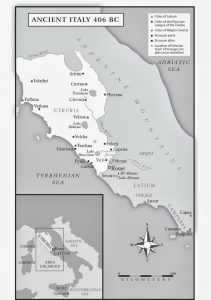What about genetic testing? Attempts have been made to establish ethnicity through DNA sampling. The result? Inconclusive. A sample taken from the bones found in tombs revealed affinities with European populations whereas genetic material taken from modern day Tuscan descendants shows Near Eastern markers.
Whoever the Etruscans were, one thing is certain – their culture fascinates me and has held my attention for over fifteen years of research. They afforded independence, education and sexual freedom to their women. And their religion developed the art of divination to a science. This liberal, mystical and cosmopolitan society inspired me to write the Tales of Ancient Rome series which chronicles the events of a ten year conflict between Republican Rome and Veii, a city described as the ‘jewel in the crown’ of the Etruscan world. It is the tale of two lovers who are blamed for starting a war, and the journey of three women to survive a siege.
This essay was first published as a guest post at HFeBooks.






Leave a Reply